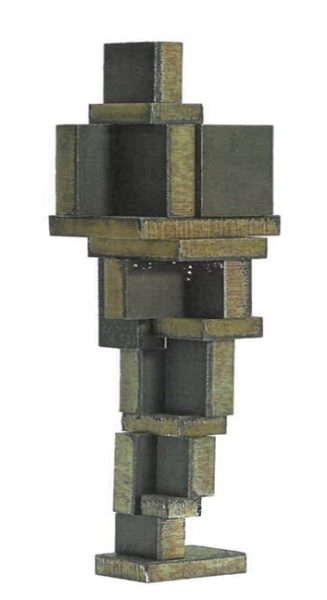By Richard Sharpe
June 2022
King’s College Cambridge has applied, for the second time, to erect a statue to Alan Turing in its grounds. The statue is by Sir Anthony Gormley: it has been turned down before on the grounds that it would harm the significance of the listed buildings and landscape – read the article here.
Turing was an undergraduate and then a fellow at King’s from 1931 to 1935. He published his paper “On Computable Numbers…” in 1936 in which he sketched out the now famous Turing Machine. The years 1936 and 1937 were of vast importance to the theories of IT as Claude Shannon at AT&T published his paper using boolean logic to examine the logic behind switching in 1937.
Cyril Hilsum CBE met Turing when Turing was at the National Physical Laboratory (NPL) in Teddington, south west London. “I played him at chess. He was in the chess team of the physics department I think, it may have been a computing department. No, I have a feeling it was the physics department. And I was on the board number one in the Admiralty Research Laboratory team. And I played him, and I don’t think his mind could have been completely on chess at the time because I was able to beat him. So it’s one of my claims to fame, that I beat Alan Turing at chess…But they were doing some pretty advanced devices, particularly in memories and things, which has not always been fully appreciated. And I never thought that NPL makes enough of the fact that Alan Turing did work there on computing. You know a lot about him being in Manchester, but not so much about him being at Teddington. And, NPL was doing some pretty advanced work on computing for the, at least for the ten years after 1945.”
Norman Saunders told the Archive: “I was one of the last people to see Alan Turing alive. This was at Cambridge… we had a maths club called the Quintics and he was invited down to give a lecture at Cambridge, so he came down to see all his old friends…. It was tragic. If I can say this, there was obviously something wrong with the guy. He wandered around all the time in this large room. He never finished a sentence. It was horrible. This is a great man, you know. But he did not look or sound like a great man, there was something wrong and he was stuttering and stammering and so forth, as I say, not finishing his sentences. Two weeks later I had the radio on during breakfast and I heard that he had died.”
A colleague of mine, Hedley Voysey had two stories about Turning. He suffered from hay fever and would cycle around in summer with a gas mask on to stop the pollen. His cycle often threw off the chain and he worked out the optimum turns of the pedals before getting off and adjusting it.

There are already statues of Turing at Bletchley Park, Manchester University and Surrey University in Guildford where Turing lived with his parents in the later 1920s.